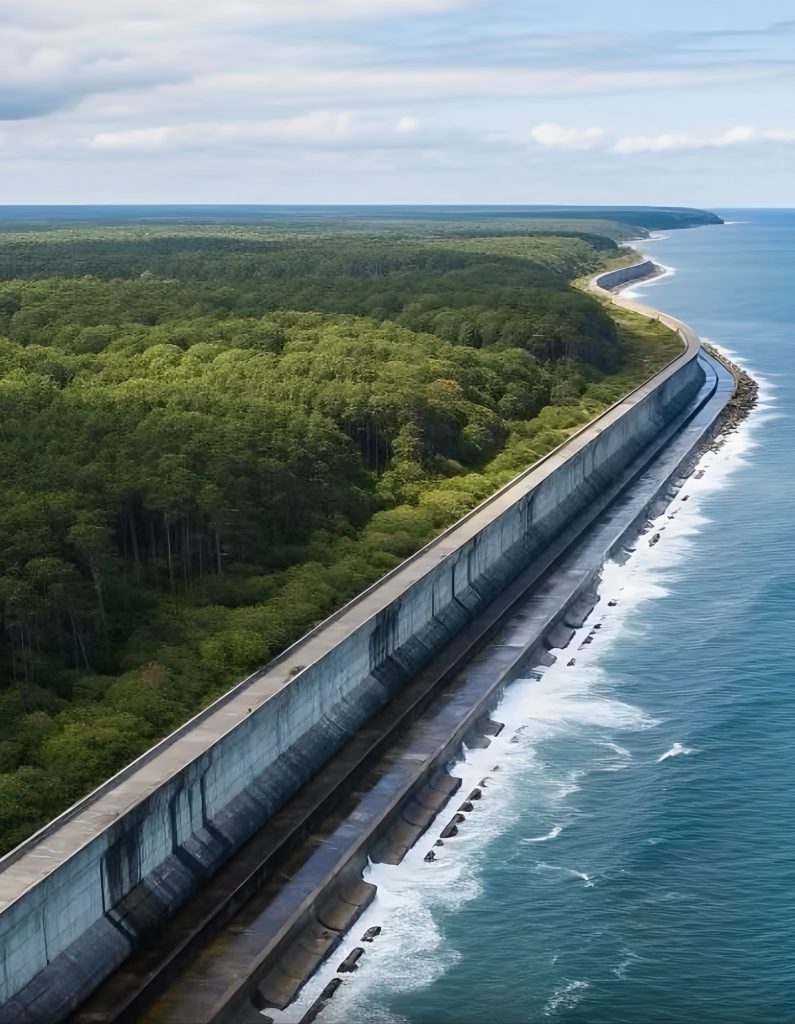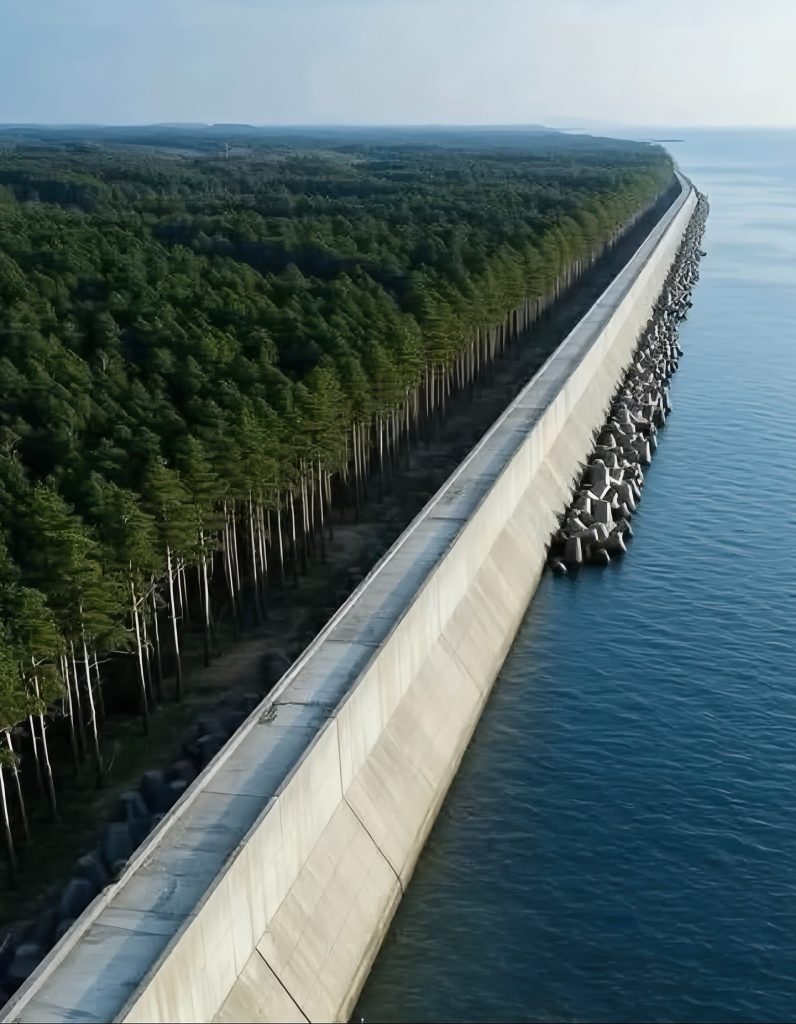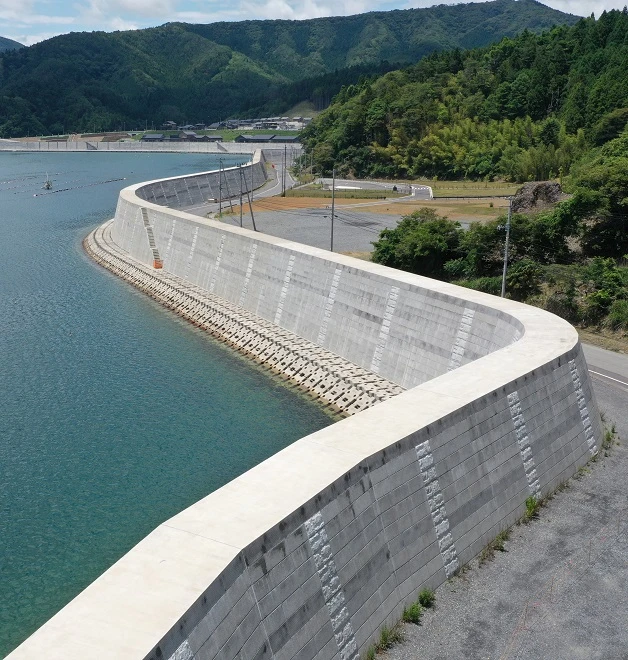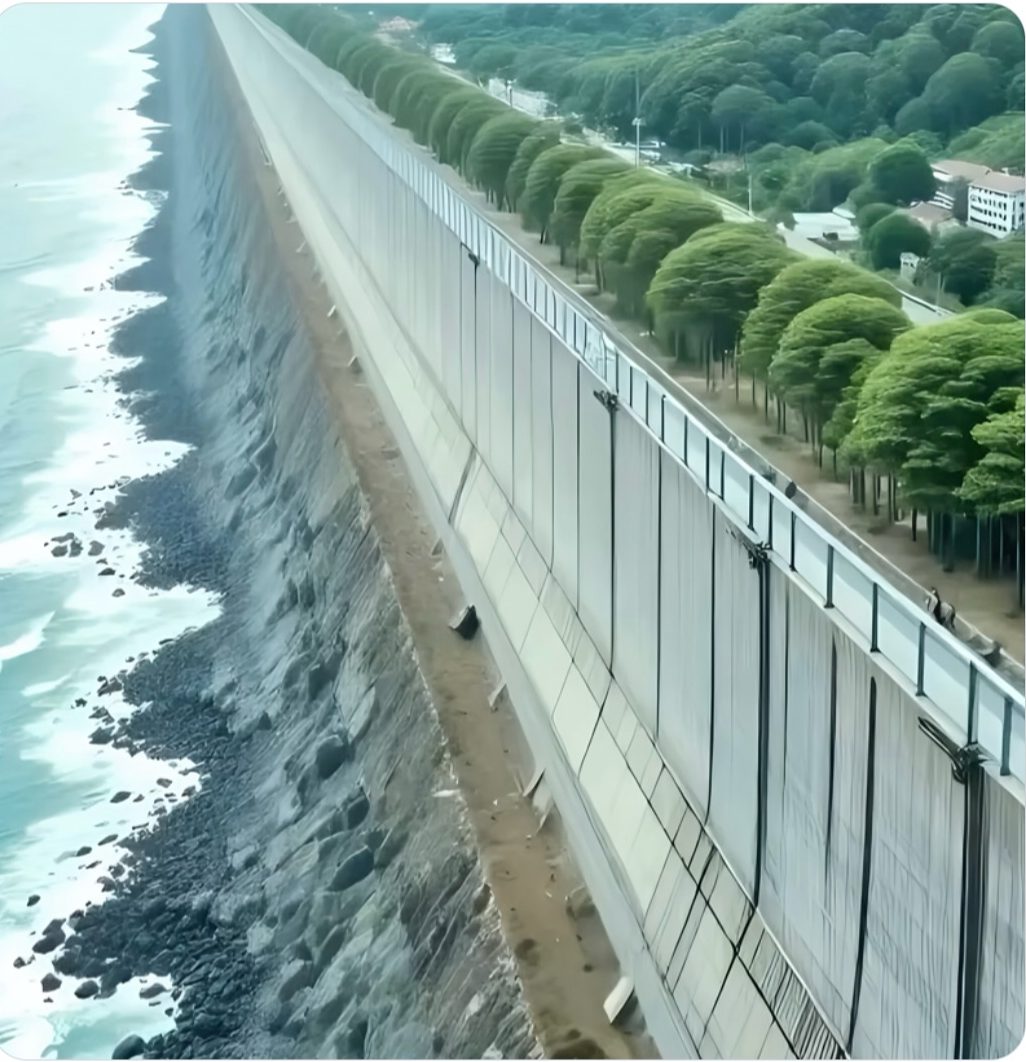After the 2011 Disaster, Japan Built a 246-Mile Tsunami Wall and Planted Millions of Trees to Protect the Future
When the tsunami of March 2011 struck Japan’s northeastern coast, it was one of the darkest days in the country’s modern history. Entire towns were swallowed by waves, families were torn apart, and landscapes that had stood unchanged for centuries were swept away in a matter of minutes. Perhaps the most haunting image was not only the destruction of homes and communities, but the loss of the pine forests that had protected villages for generations. These trees had been natural guardians, standing tall against storms, yet even they could not withstand the power of that day.
In the years since, Japan has quietly undertaken one of the most ambitious coastal defense projects in the world. The centerpiece of this effort is a concrete seawall stretching nearly 250 miles along the coastline, built to stand between fishing towns and the Pacific Ocean. Towering above many of the villages it protects, the wall has become both a shield and a symbol of resilience. For many, its presence is reassuring, a promise that such devastation will not be allowed to happen again. For others, it feels like a stark reminder of tragedy, a physical barrier that separates communities from the sea they once lived so closely with.

The wall alone is not Japan’s only answer. Alongside this man-made giant, a second project has been quietly growing—literally. Millions of trees have been planted along the coast, creating green belts that serve as living fortifications against the future. Scientists, conservationists, and local residents worked together to choose native species, ensuring that these new forests would not only provide protection but also honor the cultural and natural traditions of the region. The goal is not instant defense, as trees take years to grow strong, but long-term resilience rooted in the belief that nature, given time, can heal and guard communities better than concrete alone.
The dual approach—concrete walls on one hand and forests on the other—reflects Japan’s unique relationship with disaster. Living on an island nation that sits on fault lines and faces typhoons each year, the Japanese people have long known that nature’s power cannot be controlled, only respected. The seawall is an attempt at control, a physical boundary meant to stop the ocean in its tracks. The forests are an act of respect, a return to traditions that acknowledge the protective power of nature itself.

This balance between engineering and ecology has sparked debates across the country. Critics of the wall argue that it is too expensive, too intrusive, and that it severs communities from the ocean that sustains their livelihoods. Fishermen, in particular, have spoken about feeling cut off from the sea, unable to see the waves from their homes as their ancestors once did. Supporters, however, argue that no cost is too high to prevent the loss of lives, and that if the wall stands even once against disaster, it will have justified its existence.
What cannot be debated is the determination of the Japanese people to prepare for the future. Whether through towering walls of concrete or forests that will take decades to mature, the message is clear: never again will they be caught unprepared. For those who lost everything in 2011, this effort is not just about preventing disaster—it is about honoring the memory of what was lost by protecting what remains.

In the end, Japan’s tsunami wall and its coastal forests are not just physical structures. They are symbols of endurance, grief, and hope. They tell the story of a nation that looked devastation in the face, mourned deeply, and then chose to build—not only with concrete, but with living roots that stretch toward a safer tomorrow.

Daniel Reed is a curious mind with a passion for breaking down how the world works. With a background in mechanical engineering and digital media, he turns complex ideas into easy-to-understand articles that entertain and inform. From vintage tools and modern tech to viral internet debates and life hacks, Daniel is always on the hunt for the “why” behind the everyday. His goal is simple: make learning feel like scrolling through your favorite feed — addictive, surprising, and fun.
